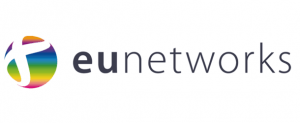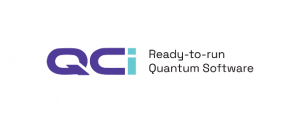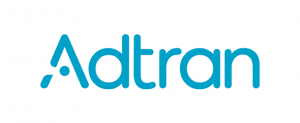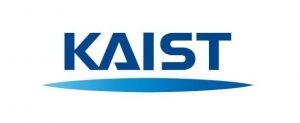Quantum News Briefs October 4: Researchers demonstrate over euNetworks’ that quantum communication possible between United Kingdom & Ireland; Adtran and Orange demo 400G transmission of QKD-secured data across 184km end-to-end system;

Quantum News Briefs October 4:
Researchers demonstrate over euNetworks’ that quantum communication possible between United Kingdom & Ireland
 Researchers from The University of York in collaboration with the Quantum Communications Hub and euNetworks Fiber UK Limited (“euNetworks”) have for the first time successfully demonstrated that quantum communication is possible over the long geographical distance that separates England from Ireland. Quantum News Briefs summarizes the announcement about the effort.
Researchers from The University of York in collaboration with the Quantum Communications Hub and euNetworks Fiber UK Limited (“euNetworks”) have for the first time successfully demonstrated that quantum communication is possible over the long geographical distance that separates England from Ireland. Quantum News Briefs summarizes the announcement about the effort.
The team, led by Professor Marco Lucamarini from the University of York, ran a series of experiments using bandwidth infrastructure provider euNetworks’ subsea cable, named Rockabill. This network is one of the newest commercial optical fibre systems in operation and connects Ireland to England in the United Kingdom, running 224 kilometres between Portrane and Southport cable landing stations. Until now, no quantum link has ever been established between the two countries, nor on a span stretching this length on a subsea fibre optic cable.
Rockabill – a new and unique ultra-low loss fibre optic subsea cable with low latency and remarkably low average attenuation – presented an ideal environment. The 224km cable connects landing stations in Southport and Portrane without amplification or a repeating system.
The series of experiments conducted on-site resulted in the successful transportation of single and entangled photons, as well as in the successful measurement of the optical phase exploited in twin-field and continuous-variable Quantum Key Distribution (QKD), over a longer continuous distance than had ever been established before in undersea optical fibres, devoid of ‘trusted nodes’ between the two endpoints of the communication channel. The success of the experiments was largely due to highly sensitive detectors deployed at the Southport endpoint of the cable to reduce environmental noise levels.
“euNetworks is proud to support a critical project that pushes the boundaries of quantum technology and has implications for the future of network security,” said Paula Cogan, Chief Executive Officer of euNetworks. “The successful integration of quantum technology over commercial-grade optical fibre infrastructure at this distance is an exciting step forward. Rockabill, and euNetworks’ Super Highway network it is part of, provide the ideal platform for new and progressive technologies that will enhance and innovate future network infrastructure.” Click here to read announcement in-entirety.
QCI Federal Subsidiary, QI Solutions, Demonstrates Unprecedented Capability to Detect Landmines Up to 2.5 Feet Below Dense Underground Surface
 QI Solutions (QIS), a wholly owned subsidiary of Quantum Computing Inc. recently conducted a field validation of its Quantum Photonic Detection and Ranging Variant 3 (VX3) unexploded ordnance detection sensor at Oklahoma State University’s Center for Fire and Explosives, Forensic Investigation Training and Research (CENFEX) range in Pawnee, Oklahoma. Quantum News Briefs summarizes.
QI Solutions (QIS), a wholly owned subsidiary of Quantum Computing Inc. recently conducted a field validation of its Quantum Photonic Detection and Ranging Variant 3 (VX3) unexploded ordnance detection sensor at Oklahoma State University’s Center for Fire and Explosives, Forensic Investigation Training and Research (CENFEX) range in Pawnee, Oklahoma. Quantum News Briefs summarizes.
The validation of Quantum Photonic Detection and Ranging (QpDAR) VX3 – conducted from September 11-14, 2023, in a field environment, mimicking real-world conditions – demonstrated, the unprecedented ability of the VX3 sensor to harness Quantum Single Photon Detection (QSPD) to detect landmines and unexploded ordnances (UXOs) from surface level to depths up to 30-inches.
VX3 is a powerful quantum sensing application that uses high speed, low power optical pulses at an eye-safe wavelength to illuminate a remote target and measure the few returning photons by projecting them to a single quantum mode. This approach provides two benefits to selective detection. First, the projection greatly reduces the ambient noise and provides robust operation in daytime, complex environments. Second, this methodology leads to extremely sensitive measurement of the mechanical and chemical states of targets at distance, such as vibration on a nanometer scale. In this propriate technique, single photon counting allows the detection of very weak signals, and the extreme sensing sensitivity is derived from the innovative single-mode projection. Compared with conventional laser vibrometers, VX3 has significant practical advantages in size, weight, power, and cost, thanks to its non-interferometry and all-fiber design, and in working distance and penetration depth, due to the innovation of projective photon detection.
Landmines are a pervasive and lasting legacy of war that kill thousands of innocent civilians every year. Hundreds of millions of dollars are invested in clearing existing minefields using heroic people as “human detectors” who risk their lives to accomplish their mission. According to United Nations News, currently there are approximately 70 countries and territories contaminated by roughly 110 million landmines. Landmines can lie dormant for years or even decades until they are triggered. Landmines kill and maim up to 1,000 to 2,000 people every month, most of whom are civilians and children. It has been forecasted that it will take approximately 1,100 years to clear all the world’s current active landmines.
To enable the QpDAR mine detection validation, QIS formed a cross-functional team comprised of technical and tactical leaders, as well as experts from university and a non-governmental organization. Click here to read announcement in-entirety.
Adtran and Orange demo 400G transmission of QKD-secured data across 184km end-to-end system
 Adtran announced on October3 its collaboration with Orange on a lab trial of quantum key distribution (QKD) technology, marking a key step towards safeguarding real-world networks from the threat of quantum computer attacks. Quantum News Briefs summarizes.
Adtran announced on October3 its collaboration with Orange on a lab trial of quantum key distribution (QKD) technology, marking a key step towards safeguarding real-world networks from the threat of quantum computer attacks. Quantum News Briefs summarizes.
Using a unique arrangement of the most advanced QKD and WDM technologies, the milestone multi-vendor demo successfully showcased 400Gbit/s transmission of a QKD-secured 100Gbit/s data stream over a 184km SSMF through three QKD links and two trusted nodes. A hybrid approach combining classical cryptography and QKD was utilized, setting a new standard for future-proof security. Running over heterogeneous end-to-end infrastructure, the trial demonstrates the technology’s maturity for widespread commercial deployment. Both the Layer 1 encryption and hybrid key exchange used in the trial are enabled by Adva Network Security’s ConnectGuard™ solution.
The trial featured Adtran’s products-and-services with OpenFabric™️ technology for efficient encryption key distribution and optimized link performance. Leveraging a coherent 400Gbit/s DP-16QAM channel, the platform transported a QKD-secured data stream across two trusted nodes and three links, spanning 184km of standard, single-mode dark fiber. One of the trial’s key achievements was overcoming data loss and distance constraints while transporting significant volumes of quantum-secure data alongside the quantum channel. The trial introduced a hybrid key exchange, blending classical asymmetric methods with QKD, creating a robust dual layer of security. While classical key exchange ensures immediate data protection in line with current cryptographic standards and governmental approval, QKD offers future-proof security, resilient against future computational advancements.
DTRAN Holdings, Inc. (NASDAQ: ADTN and FSE: QH9) is the parent company of Adtran, Inc., a leading global provider of open, disaggregated networking and communications solutions that enable voice, data, video and internet communications across any network infrastructure. Adtran solutions are used by service providers, private enterprises, government organizations and millions of individual users worldwide.
Orange is one of the world’s leading telecommunications operators with revenues of 43.5 billion euros in 2022 and 136,000 employees worldwide at 30 June 2023, including 74,000 employees in France. The Group has a total customer base of 291 million customers worldwide at 30 June 2023, including 246 million mobile customers and 24 million fixed broadband customers. The Group is present in 26 countries. Orange is also a leading provider of global IT and telecommunication services to multinational companies under the brand Orange Business. Click here to read the complete announcement.
Can cloud-based quantum computing really offer a quantum advantage?
 Jiheon Seong and Joonwoo Bae of the Korea Advanced Institute of science and Technology developed and tested an entanglement witness circuit. It works to certify entanglement even when the cloud-based service allows only limited control of the machine. Quantum News Briefs summarizes September 22 article in Phys.org
Jiheon Seong and Joonwoo Bae of the Korea Advanced Institute of science and Technology developed and tested an entanglement witness circuit. It works to certify entanglement even when the cloud-based service allows only limited control of the machine. Quantum News Briefs summarizes September 22 article in Phys.org
Researchers want to build circuits that generate entanglement among qubits. However, until they use a circuit, they do not know whether it is an entanglement-generating circuit or not. A costly procedure called quantum tomography can be performed, or the researcher can use an entanglement witness. The entanglement witness is a mathematical function relating two specific qubits and their states. The value of its output signals whether the states of the qubits are entangled or separable.
Unfortunately, it is not always possible to use an entanglement witness without direct access to the quantum machine. In a lab setting, and in the IBMQ cloud-based quantum computing service, a researcher can choose which of the machine’s hardware qubits to allocate to a circuit.
A researcher’s only input to the IBMQ and IonQ cloud services is a quantum circuit. To address this limitation, Seong and Bae designed special entanglement witness circuits that use the entanglement witness strategy for certifying the presence of entangled qubits. Researchers can use these circuits to detect entanglement using only the measurement statistics output by the service.
The new entanglement witness circuits are built on a recently developed framework called EW 2.0, which is twice as efficient at detecting entanglement.
Seong and Bae describe entanglement detection for two- and three-qubit entanglement-generating circuits, outline two schemes for constructing entanglement witness circuits for entanglement-generating circuits and share results of experiments using the IBMQ and IonQ cloud-based quantum computing services. Click here to read complete article in Phys.org
Sandra K. Helsel, Ph.D. has been researching and reporting on frontier technologies since 1990. She has her Ph.D. from the University of Arizona.





















